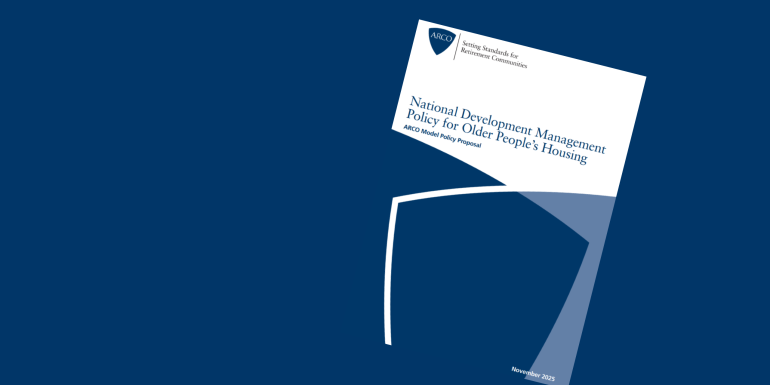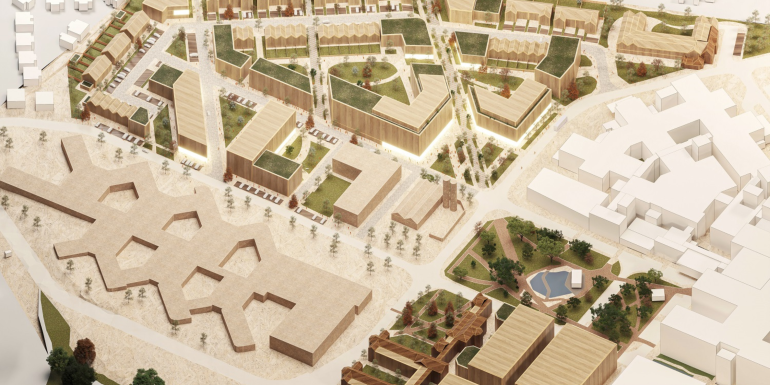Most of us working within the Integrated Retirement Community (IRC) sector are acutely aware of the financial and human cost of falls. They have a dramatic impact on life expectancy, quality of life and independence - something which all of us are striving to improve upon by reinventing how our ageing population grows old through innovative, safe and social places to live.
What's the Problem?
With Age UK predicting that the number of people living in the UK over 65 years of age will increase by 40% by 2040 - to more than 16 million people, the case for falls prevention interventions is going to become even more relevant.
Currently 30% of people over the age of 65 will fall at least once per year, with fall related hospital admissions costing the NHS over £2 billion per year.
With falls being the most common cause of death from injury in the over 65s as well as being the number one precipitating factor for a person losing independence, the need for effective falls prevention interventions is high.
Falls should not be a normal part of ageing, with many falls being able to be prevented - through interventions that are both evidence-based and effective. NICE highlights effective solutions as including muscle strengthening and balance training.
Improving the strength of the residents living within Integrated Retirement Communities should be a key focus - with appropriate interventions, falls can be reduced by 24%.
Strength/resistance training is a vital component of a successful falls prevention programme, yet it can be immensely complicated for residents to take ownership of this themselves and train independently. The myriad of variables often leaves new users confused and lost with where to go next, with many finding this training method intimidating.
With barely any feedback available as to how users are progressing and little guidance about what to do, standard gym strength offerings simply alienate the ageing population, a population group who stand to benefit immensely from this training modality.
What's the Solution?
Exercise options like EGYM offer a proven way for residents to improve their strength, reduce their falls risk and provides the ability and confidence to train independently and safely, while having fun and receiving accurate progress feedback along the way.
By utilising a one tap login for machine setup, EGYM personalises each workout to each individual, ensuring that each resident is completing a program relevant to them at all times. By automatically prescribing the right set up, resistance, rep range and speed, residents can simply just log in and complete their workout.
The Evidence
With help from the Bulverde Activity Centre (Spring Branch - Bulverde, Texas, USA), 18 participants took part in a 12 week falls reduction study - training on a 9 piece EGYM circuit up to twice a week (average training sessions were 1.78 sessions per week).
Measures included:
- A self reported falls prevention questionnaire
- A standard Timed Up & Go test
- A standard 30 second Sit to Stand test
- Strength test data from the EGYM equipment.
- Tests were completed pre and post intervention
Results:
- 72% of the participants reported less concerns with balance after 12 weeks of strength training.
- Timed Up & Go decreased by an average of 2 seconds
- 67% of participants improved their Timed Up and Go
- Average repetitions increased by 2 reps in 30 seconds for the Sit to Stand test
- 78% of all subjects improved their Sit to Stand score
- Average strength across all EGYM machines increased by 19%
- EGYM BioAge scored reduced by an average of 6.5 years in 12 weeks
Other Ways EGYM Supports Falls Prevention
In the initial 3 months of usage, strength increased on the EGYM Leg Press (push off force - a key indicator of falls risk) in the 61-70 age group by 34% on a cohort size of over 10,000 users across the globe. In the 71-80 age group this strength improvement equated to 23% over a cohort size of 3800 users.
Training sessions were completed independently by users, showing that options like EGYM give users a safe, easy to use solution that continues to motivate them, helping to keep them on track to improve their strength and ultimately their overall health.
Just as the UK Health Security Agency stated in a 2014 report on the human cost of falls - strength training doesn’t just have to be about preventing falls; it can also be about having fun and staying connected.
Dr Zoe Wyrko, Well-being Director, Riverstone Living:
“Research over recent years into frailty and sarcopenia has highlighted that, for older people, strength and resistance training is actually more important than cardiovascular exercise in improving balance, staying well and preventing falls. However, traditional resistance machines can be intimidating and hard to use, meaning this essential type of exercise just doesn’t happen.
"Knowing that the seat will automatically be in the right place and the machine at the right setting simply by touching the wristband to the screen; also that the machine can sense you tiring so won’t let you lift too much or hurt yourself gives the sort of reassurance that leads to a real confidence in exercising, helping people be fitter and stronger than they perhaps thought they could be.”
Sources:
Overview | Falls in older people: assessing risk and prevention | Guidance | NICE





